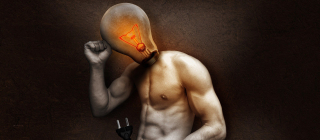Vulnerability & Confidence (Paradox Pair #26)
Building confidence means being willing to be vulnerable. Only then can you train your brain to to recognize a new pattern, one where your confidence grows through experience.

We are most confident when we are prepared. Surprisingly, confidence doesn't come from success, rather it comes from experience gained from being vulnerable. When we are tasked with something we've done many times, our confidence is high, we don't stress about it, it's a known situation where we already have proficiency. However, when we are tasked with something new, leveraging a skill or knowledge that we haven't prepared for, our stress levels go up. Our sympathetic nervous system releases adrenaline, which increases our heart rate and causes our blood pressure to rise. Frankly, it doesn't feel very good, yet our bodies are preparing us to deal with uncertainty. Our eyes may dilate to allow in more light and improve vision, our rising heart rate supplies more oxygen to our bloodstream to give us energy to respond. This is often referred to as the flight-or-fight response, yet it's not a really a response at all — it's a prediction.
"Doubt is not a pleasant condition, but certainty is absurd” -Voltaire
Our brains are wired for pattern recognition, it's how we learn and make decisions. Our neocortex is adept at taking sparse data and our brains fill in the blanks to fit a known or perceived pattern. Unfortunately, the resulting pattern may not always be correct. When we feel anxious because someone is challenging our ideas, we may be predicting what will happen next based on our past experiences rather than what is actually happening in the moment. During these times our confidence wanes.
Alas, there is a solution — we can become self-aware and recognize that our reactions are shaped by our own thinking. Acknowledging where we have a vulnerability (lack of training or experience) creates a space for us to ask questions and learn from the answers. Leaning into our vulnerability is the gateway to building a new pattern to our internal library. With practice our brains will begin to associate situations that fit this new pattern and when that happens our confidence grows.
There are thousands of articles on confidence that reference the Dunning-Kruger Effect. Popularized in a 1999 paper by David Dunning and Justin Kruger, the pair claimed that people overestimate their abilities especially in situations where they have higher incompetence. More recent research has shown that the conclusions drawn by Dunning and Kruger were likely made in error.
"The darling of those who wish to explain why incompetent people don’t know they’re unskilled, the Dunning-Kruger effect may actually just be a data artifact." -Jonathan Jarry

More Curiosity Links
/2795194-article-what-is-the-fight-or-flight-response-5a98601d8e1b6e0036df2951.png)










